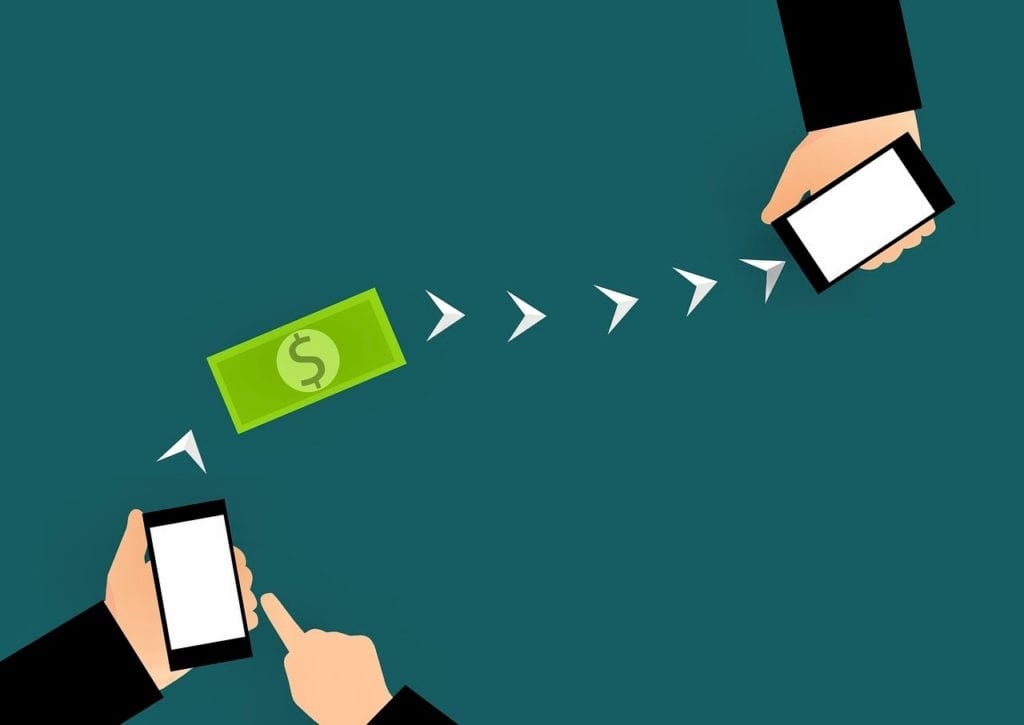
Money is a legal tender used as payment in a transaction and serves as a medium of exchange, as well as a measure of value. While there are many forms of money, as well as different currencies, it is worthwhile to remember the concept of the product life cycle (PLC): that new products tend to make old products obsolete. One should never take any new products, especially innovative ones, launched in the marketplace for granted. Below, I outline the general evolution of money, including channel innovation. Do you see the PLC concept applicable in financial services as well? What about their channels?
- Barter or commodity money – Parties agree to exchange something of value (like metals) with another item they need (like food) and agree on the quantity involved.
- Gold or metallic money – More measurable than commodity money, this includes other metals, such as silver, where coins are made from.
- Paper money – Unlike coins, paper money is lighter and easier to make, and can be transacted anonymously. They can also be regulated by a central bank to control supply. The Bretton Woods Agreement in 1944 (after World War 2) also established that the US Dollar was as good as gold and adopted it as the means of exchange, where countries fixed their currencies compared to the US dollar.
- Bank money – Unlike the safety and bulky disadvantage of bringing paper money for big transactions, bank money, such as cheques, and bonds, letter of credits (LCs) are more convenient.
- Plastic money – The innovation of credit cards in 1950 removes the need to carry cash, as cardholders pay after getting a summary of their bills at a later date. A variation, debit cards, removes the need for providers to give credit.
- Fiat (Latin for “Let there be money”) Money – Many countries realize that since they fix their currencies against the US dollar, the continuous high deficit of the United States made the US print more dollars regularly. They wanted gold instead of the US dollar, since there is no corresponding value created when US dollars are printed. On Aug 15, 1971, US President Richard Nixon suspended the shipment of gold to other countries, and eventually, agreements from the 1944 Bretton Woods system have been amended as currencies are no longer backed by gold, but only by the government and the confidence level people put to that government. As of the end of 2020, the US dollar still accounts for 59% of the global foreign exchange reserves, but also represents a 25-year low (source: IMF). Before the introduction of the Euro in 1999, the US dollar was 71% of total global reserves; now the Euro accounts for some 20% while China’s renminbi has about 2%.
With the fourth industrial revolution (digital revolution) building on the third (electronics and information technology), the digital revolution brought about a fusion of technologies that blur traditional boundaries. Three major developments have happened in electronic money. They are as follows:
1. Mobile money – Whether from fintech (like GCash of Globe Telecom) or digital accounts from banks (like UnionBank), there is no need to carry cash or cards. Money is stored in digital wallets and accessed through the mobile phone or app 24/7. This increases efficiency as cash needs to be stored, sorted, cleaned and distributed physically, the disadvantage of which became very evident during the COVID-19 pandemic of 2020.
2. Cryptocurrencies – Private digital payments have been launched as money alternatives after the crash of the US economy in 2008 brought about by subprime mortgages sold by many major U.S. banks, which affected the entire world. Mistrust in the banking system forced depositors to look for value options. Bitcoin, launched in 2009, was the first and most popular cryptocurrency not regulated by any central bank. A key feature is that it is built on a blockchain or distributed ledger technologies (DLT), enhancing the security of data, resistant to both tampering and cyberhackers due to availability of the same data in various distributed points, a feature especially attractive in a low trust environment. Bitcoin surpassed Google as the fastest asset to have attained a US$1 trillion market capitalization (Feb. 20, 2021). It also had a market value higher than Visa and Mastercard combined at one time, with value decided by the buyers based on demand and supply, instead of by the government. At this scale, crypto currencies are too big to be ignored by the public, as well as governments — with it being accepted as legal tender in countries such as El Salvador, while banned in other countries like Algeria, Bolivia and Morocco.
There is another form of cryptocurrency called Stablecoins, developed to minimize large volatility by pegging the value to any regulated currency or commodity, reducing financial risk to holders. An example is the anticipated launch of Diem, backed by Facebook (2.8 billion monthly active users) and other industry players such as Uber, and Spotify, likely before the end of 2021, pegging their first stablecoin to the US dollar as of last report.
3. CBDC or Central Bank Digital Currencies – The digital representation of a country’s government-issued, Fiat physical cash, and is non-interest bearing. Central banks enjoy much higher trust than private crypto platforms, hence, have the advantage of fast scaling and network effect, low volatility, and perceived high reliability without the default risk of private crypto assets since they are the only institutions that can generate legal tender. Some countries have begun piloting CBDCs. For instance, China (digital renminbi in April 2020 paid to government employees), Sweden (e-krona in 2017), and The Bahamas (Sand Dollar in December 2019 either using mobile device or card-based) have already launched their CBDCs.
CBDCs have many advantages, to wit:
- Increase in financial inclusion (specially for developing countries)
- Increase in digital security
- Increase in efficiency in the payment system
- Reduced transaction time and cost (especially during emergencies)
- Verification of users to comply with due diligence requirements, such as the anti-money laundering (AML) and counter financing of terrorism (CFT) laws while safeguarding privacy
- Regulation and control of the money supply in all forms to increase financial stability (specially in times of crisis),
- Ease of internationalization of one’s currency if desired, without affecting another central bank in carrying out its mandate for stability in its monetary and financial sovereignty.
If CBDCs become successful, the value of cryptocurrencies might diminish as CBDCs will be easier to value based on the fundamentals of the issuing country.
To date, since paper money or cash in circulation (CIC) has been declining in many countries, majority of Central Banks are researching on retail CBDCs, reflecting on their role as Central Banks and on the role of financial sector as payment service providers (PSP), as well as the role of money. They are also studying the pioneers who piloted how confidence in the system can be sustained by monetary authority, and how they can fill the gaps being satisfied by unregulated private crypto currencies.
Regardless of their forms and channels, there are a host of money types in today’s monetary system. One thing is certain– while CBDC is a digital representation of Fiat money, it requires a processing infrastructure on the payment side, which typically forms the backbone of any economy. Any major change in the value chain ecosystem and channel has both rewards and risks and requires careful design. Whether a game changing digital route-to-market innovation has the “right to win” for all parties requires a premortem implication to political, economic, social and technological (PEST) forces to get it right the first time.
As bestselling author and channel expert Emilio Macasaet III would say: “Beyond looking at the Service Output Demand or SOD that a channel is supposed to deliver, plot the desirable as well as the undesirable outcome to understand consumer’s POV, to avoid any unintended consequences!”
DISCLAIMER: All opinions expressed within this content are solely the author’s and do not reflect the opinions and beliefs of the author’s affiliations.
********
Josiah Go is Chairman and Chief Innovation Strategist of Mansmith and Fielders Inc. and author of 55-video Business Model Course available in www.continuum-edu.com


